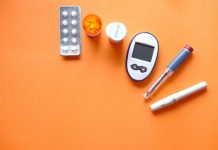
Facing violence or child abuse can hurt more than just the heart and mind. It can also make people more likely to get diabetes.
This is the main finding from a recent study led by top researchers, including the acting director of the Center for Research on Violence Against Women (CRVAW) at the University of Kentucky.
The study is titled “Lifetime Interpersonal Violence or Abuse and Diabetes Rates by Sex and Race”. It was recently featured in the American Journal of Preventive Medicine.
It showed that people who faced violence or child abuse in their life have a 20% to 35% higher risk of getting diabetes.
Ann Coker, Ph.D., was one of the main researchers. She holds a special post at CRVAW. She also teaches about how diseases spread at the UK College of Medicine.
Coker says that both violence and diabetes can be stopped. If we can reduce violence and trauma, we can also cut down on diabetes.
In the United States, over 37 million adults have diabetes. It is a disease that messes with the body’s ability to make insulin or use it right to manage blood sugar.
Diabetes is the eighth biggest killer in the U.S., according to the Centers for Disease Control and Prevention (CDC).
The Role of Stress in Diabetes
In the study, lifetime violence or abuse (IVA) means physical or mental violence, threats or abuse when you are grown up, and child abuse or neglect.
This type of violence is very common. It hurts millions of people every year.
When someone is constantly stressed because of IVA, their body reacts by making more cortisol and less insulin. This raises blood sugar levels and can lead to diabetes.
Coker and other researchers looked at data from the Southern Community Cohort Study (SCCS) to study the link between IVA and diabetes.
The SCCS involved around 25,000 people. They were asked about violence and abuse from 2002 to 2015. The study also measured how many of them got diabetes over time.
Moving Forward
Coker says this is the first study with enough data to see how lifetime violence and child abuse or neglect can increase the risk of getting diabetes among lower-income men and women from the South who are Black or white.
Before this study, it was known that women who faced partner violence were more likely to get diabetes. But it was not known that violence came before diabetes. Also, there was no data on this for men or within racial groups.
The findings also showed an increased risk before the extra stress from the COVID pandemic. This strongly suggests the need for professionals to work on preventing and dealing with violence.
This will help cut down the short and long-term social and health effects of partner violence and child abuse.
The cost of both IVA and diabetes is very high. The CDC says they cost the country $3.6 trillion for IVA and $327 billion for diabetes. But they can be stopped.
Violence and child abuse touch many U.S. citizens. The study found an increase in these problems even before the extra stress from the COVID pandemic.
These types of violence often happen to the same person or within the same family. They can lead to serious and long-lasting mental and physical health problems that can be prevented.
If you care about diabetes, please read studies that eating more eggs is linked to a higher risk of type 2 diabetes, and how to eat to reduce heart disease death risk if you have diabetes.
For more information about nutrition, please see recent studies about high-protein diets linked to a higher risk of type 2 diabetes, and results showing Mediterranean diet could help reduce the diabetes risk by one-third.
The study was published in the American Journal of Preventive Medicine.
Follow us on Twitter for more articles about this topic.
Copyright © 2023 Knowridge Science Report. All rights reserved.



